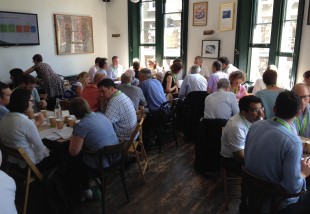Articles
Cool solutions for overheated homes
Tweet
On the day the Met Office raised a Heatwave Level 2 Alert in London, the Zero Carbon Hub hosted a workshop looking at tackling overheating in homes… The event started with introducing the Zero Carbon Hub project that is aiming to produce in Spring 2015 a ‘baseline’ report setting out the national picture on overheating in homes, before publishing a second report by December 2015 that will outline the range of potential strategies for addressing overheating in homes. LCCP is an active stakeholder of the project, which expands on our previous work on overheating thresholds for Londoners.
The workshop’s first part fostered discussion about the key issues induced by overheating: what emerged as an essential component to drive change was human behaviour, so the need to educate customers through efficient community engagement, for example via housing associations, was seen as essential. This means that tackling the overheating issue would not only be done via a ‘technical push’ but also via a ‘market pull’.
The other raised issues were around adapting to overheating at an earlier stage in the construction process and in a more joined-up way via more integrated planning rules. Suggestions included picking evidence from other countries that are used to design for overheating and a monitoring process assessing the homes’ resistance to overheating, for example via embedding them within health and safety regulations.
The rest of the workshop looked at various strategies for tackling overheating in a systematic way. One of them was to increase the industry’s capacity to predict and model overheating risk in a given property or development: it was highlighted that in spite of having all the required tools to do so, we were missing one single methodology that is used by all and adapted to the different types of homes and of occupancy. This would lead to one modelling standard across the industry, ideally mandated by the Government and endorsed by the relevant professional bodies.
As a result, a potential strategy was outlined in a three phase structure: 1) a risk assessment in the form of a checklist made of common criteria, 2) a simple model, possibly based on the SAP software, and 3) a dynamic model integrating various overheating factors, including the building’s external environment. Those were some of the solutions suggested at this inspiring interactive workshop. To find out more about the Zero Carbon Hub’s Tackling Overheating in Buildings project and its next steps click here.
Leave a Reply